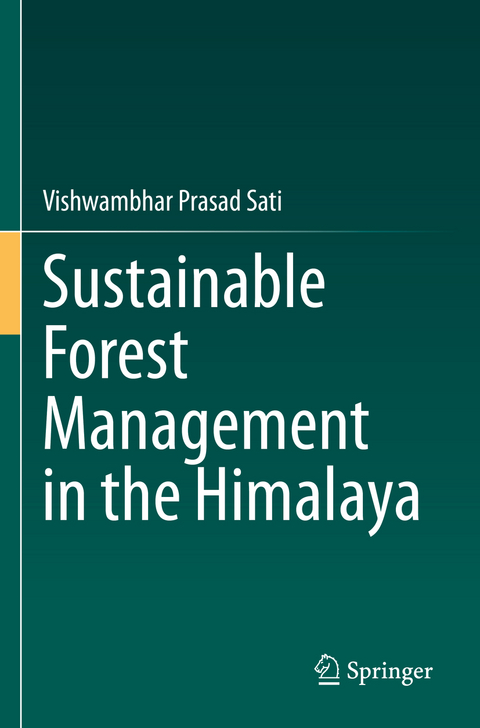
Sustainable Forest Management in the Himalaya
Springer International Publishing (Verlag)
978-3-031-21938-2 (ISBN)
Vishwambhar Prasad Sati (b. 1966), D.Litt. and Ph.D., a Senior Professor of Geography and Resource Management, is currently working at the Mizoram University (A Central University), Aizawl, India. With a teaching career of about three decades, he has served in several higher education institutions within and outside India, some of them being 'Eritrea Institute of Technology', Asmara, Eritrea (NE Africa), 'Institute of Mountain Hazards and Environment', Chengdu, China, 'Madhya Pradesh Higher Education', and 'HNB Garhwal University', Srinagar Garhwal. In the same field, he has deeply been involved in research, and has worked as a Visiting Professor and Visiting Scholar in the world's various renowned research and academic institutions, including 'The World Academy of Sciences', 'Chinese Academy of Sciences', 'Indian National Science Academy', 'Indian Council of Social Science Research', and 'Indian Institute of Advanced Studies'. Besides, he has travelled widely - 36 countries and all over India. He has an impactful expertise in the fields of Natural Resource Management, Environment-Development Interface, Climate Change, Rural Livelihoods, Disaster-Related issues, and Culture of the Himalayan region. He has developed several models and action plans for environmental conservation and economic development of the fragile Himalayan ecosystems/landscapes. More than a dozen of national individual projects and projects with international collaboration have been conducted by him. With more than 160 research papers and articles, and about three dozen books published, his academic contribution is well-documented at national and international levels.
Chapter 1. Introduction.- Chapter 2. Forest Land Use/Cover Change.- Chapter 3. Forest Classifications and Working Circles.- Chapter 4. National Parks, Wildlife Sanctuaries, and Conservation Reserves.- Chapter 5. Forest Diversity and Distribution.- Chapter 6. Forest Stocks and Products.- Chapter 7. Environmental Index.- Chapter 8. Ecosystem Goods and Services.- Chapter 9. Drivers of Forest Degradation and Conservation Measures.- Chapter 10. Climate Change and Forests.- Chapter 11. Cultural and Socio-Economic Significance of Forests.- Chapter 12. Sustainable Forest Management.- Chapter 13. Conclusions.
| Erscheinungsdatum | 04.01.2024 |
|---|---|
| Zusatzinfo | XXX, 172 p. 71 illus., 69 illus. in color. |
| Verlagsort | Cham |
| Sprache | englisch |
| Maße | 155 x 235 mm |
| Gewicht | 317 g |
| Themenwelt | Naturwissenschaften ► Biologie ► Ökologie / Naturschutz |
| Naturwissenschaften ► Geowissenschaften ► Geografie / Kartografie | |
| Weitere Fachgebiete ► Land- / Forstwirtschaft / Fischerei | |
| Schlagworte | Conservation parks • Environmental index • Forest classification • forest degradation • Forest management • Forest products • land use • Wildlife sanctuaries |
| ISBN-10 | 3-031-21938-4 / 3031219384 |
| ISBN-13 | 978-3-031-21938-2 / 9783031219382 |
| Zustand | Neuware |
| Informationen gemäß Produktsicherheitsverordnung (GPSR) | |
| Haben Sie eine Frage zum Produkt? |
aus dem Bereich


